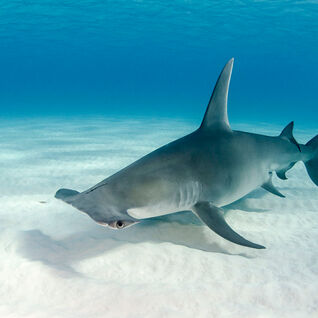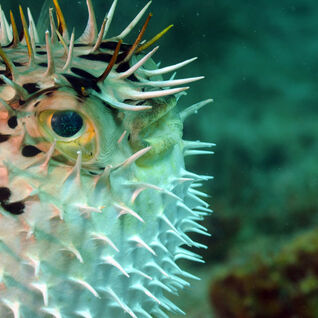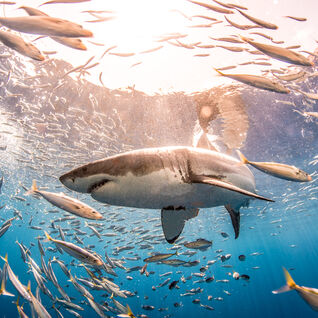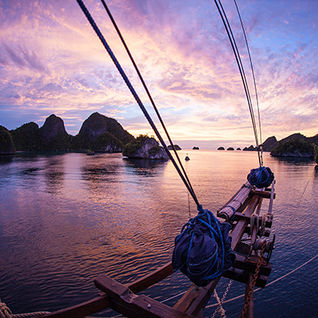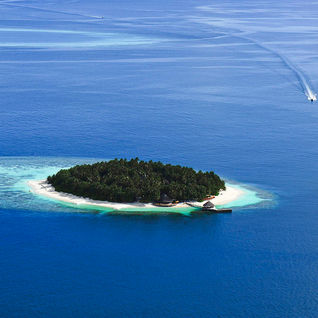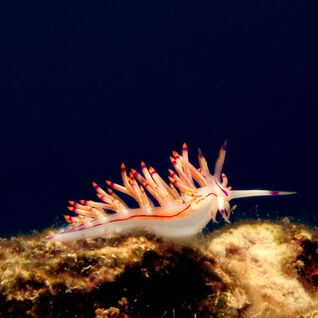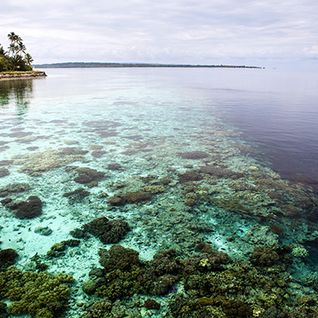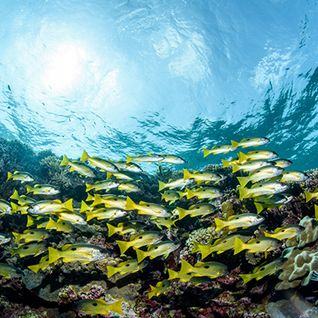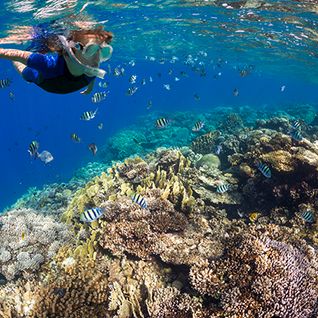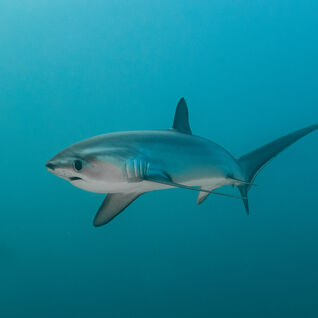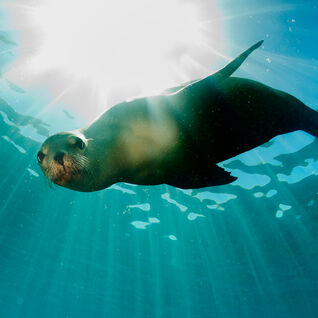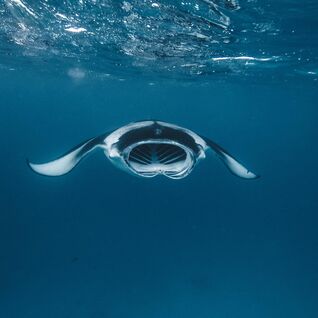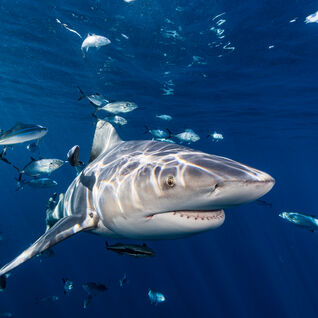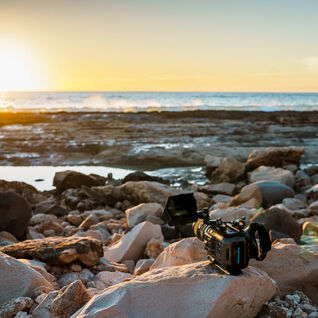It's darker, it's colder, your bottom time decreases and your air consumption increases… Despite this, deep sea diving is ever-popular. Be it spotting sharks or marvelling at stunning topographical features, sometimes it pays to dive a little deeper. So, let's jump in and head to the bottom to uncover some intriguing deep-sea diving facts...
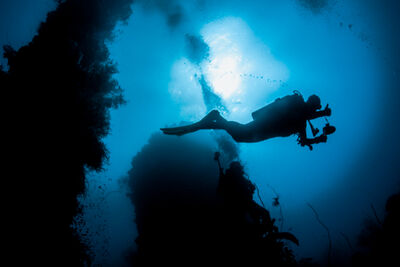
Pressure at 40m is five times as much as at the surface
Perhaps the most important deep sea diving fact is how pressure increases with depth. At the surface, there's one atmosphere (or one bar) of pressure, which is the (unnoticeable) weight of the gases in the Earth's atmosphere. Water, however, weighs a lot more than these gases (no shock). So much more, in fact, that for every ten metres of depth underwater, the pressure increases by one additional atmosphere. So, at ten metres below the surface, a diver experiences two atmospheres of pressure - one from the atmosphere above and one from the water. Still with us?
At 40 metres' depth, that works out to be five atmospheres of pressure - one from above the water and four from below. This extra pressure has little effect on your body, but it does have a big effect on the gas you're breathing: it squashes it. At 40 metres, the gas you breathe is five times as dense as it was at the surface, meaning with each breath, you'll breathe in five times as many gas particles. So what's the big deal? Well, it means your gas supply will be used up five times as fast. Gulp.
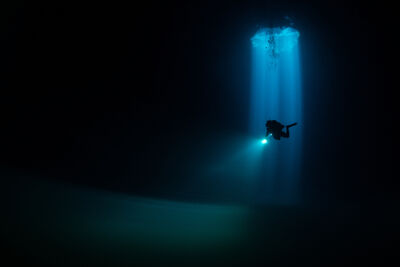
Nitrox doesn’t allow you to dive deeper
Nitrox, or 'enriched air,' is very popular among recreational divers. While standard air remains more common - especially for shallow dives - and technical divers rely on specialised gas blends for extreme depths, nitrox is super useful for dives in the 20 and 30-metre range. However, there's a common misconception that nitrox allows you to dive deeper. In reality, it's more accurate to say nitrox allows you to dive for longer.
Recreational divers are usually limited by either their air supply or how long they can stay down without needing decompression stops (these help to avoid sickness). This is because the extra pressure at depth increases nitrogen absorption into the blood. Not good. However, nitrox (air with more oxygen and less nitrogen) works as a savvy solution. By breathing in less nitrogen, you can stay underwater for longer than you could with regular air. Just keep in mind: because nitrox has more oxygen, you can't go as deep as you can with normal air due to pesky oxygen toxicity.
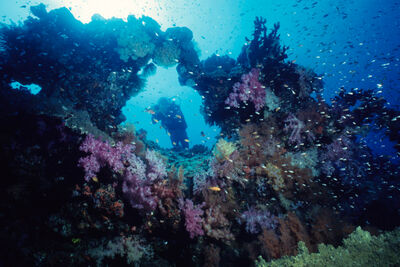
Thermoclines can make deep diving a little chilly
Water closer to the surface is always a little warmer than the water deeper down - so you can expect deep sea diving to be cooler than your usual dives. What's more, you might also experience a thermocline. Thermoclines are distinct layers of temperatures, usually just differing by a degree or two, but occasionally you'll notice a much chillier difference.
One location that's well known for its thermoclines is Nusa Penida, just off the southern coast of Bali. Here, the warm tropical waters of the Indonesian Throughflow meet the cooler Indian Ocean currents to the south. As you descend, you'll often see a shimmering layer - this is where temperatures drop sharply. While it's pretty chilly entering the lower layer, it's always lovely breaking back through into the warmer layer. These cooler waters are also what bring the mola mola to Nusa Penida's cleaning stations.
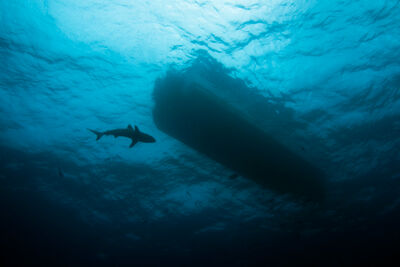
Why do people deep sea dive?
Our final deep sea diving fact is all about the compelling reasons to venture further down into the big blue. At certain dive sites, it's the marine life that draws divers into the dark depths. Fancy swimming with one of the ocean's fastest predators? Malapascua, in the Philippines, is just the ticket. Here you'll find thresher sharks, deep-dwelling creatures with the habit of rising to around 30 metres at dawn to visit cleaning stations in Monad Shoal.
Shark enthusiasts will also want to deep dive below the surface in the Galapagos, the South Maldives or at Cocos Island off the coast of Costa Rica. Here, you'll give yourself a very good chance of seeing schooling hammerheads.
Beyond marine life, some dive sites are home to stunning topography deep below the surface. Planning a trip to Mexico? Visit the Yucatan Peninsula to discover underwater marvels. This region's cenotes (freshwater sinkholes) form an intricate network of flooded caves, filled with dramatic rock formations and magical rays of sunlight pouring in through openings.
Near these caves and cenotes, you can also find one of the world's most iconic dive sites: the Great Blue Hole in Belize. The Great Blue Hole is an almost perfectly round sinkhole sitting at the centre of Lighthouse Reef. In addition to the stunning stalactite and stalagmite formations, lucky divers might even come face-to-face with a hammerhead or a bull shark.
Shipwrecks are another good reason for diving a little deeper. If you like wreck diving and are comfortable diving to depth (and qualified to do so), Chuuk Lagoon should be on your bucket list. It's a wreck-diving heaven - several Japanese wrecks from World War II are scattered along the bottom of this tropical lagoon in Micronesia.

